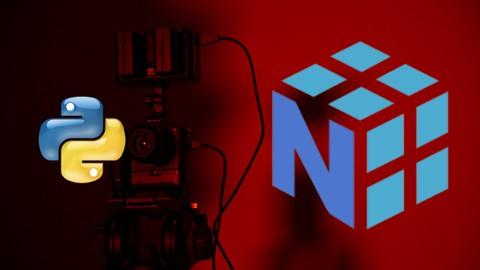Last Updated on December 9, 2024 by GeeksGod
Course : Numpy For Data Science – Real Time Exercises
“`htmlMastering NumPy Data Science Exercises: Your Ultimate Guide
Numerical computing has become an essential part of data science, and when it comes to numerical operations in Python, there’s no better tool than NumPy. In this article, we’ll explore NumPy data science exercises that will equip you with vital skills for your data science journey. If you’re looking for a way to improve your Python coding skills while diving deep into data science, you’ve landed in the right spot!
What is NumPy?
NumPy, short for Numerical Python, is a fundamental library that provides support for arrays, matrices, and a large number of mathematical functions to operate on these data structures. This library is crucial for anyone working in fields that involve extensive numerical computations. Think of NumPy as your reliable toolbox that enhances Python’s capabilities, especially for data manipulation.
Why Use NumPy for Data Science?
NumPy excels in several areas:
- Performance: Unlike Python’s built-in data types like lists and tuples, NumPy arrays are more efficient for large datasets.
- Functionality: It supports mathematical operations, including algebraic computations, statistical calculations, and more.
- Integration: It integrates seamlessly with other popular Python libraries such as pandas, matplotlib, and SciPy.
Are you still on the fence about using NumPy? Consider this: have you ever faced performance issues with data manipulation in Python? Embracing NumPy data science exercises could resolve those challenges swiftly.
Setting Up Your Environment
Before we dive into exercises, let’s set up our environment. You’ll need to have Python and Jupyter Notebook installed on your computer. If you’re looking for a great place to learn, you can also check platforms like Udemy for courses on NumPy.
Basic NumPy Commands
Let’s look at some basic commands that we’ll frequently use during our NumPy data science exercises. Understanding these will pave the way for more advanced operations:
import numpy as npA = np.array([1, 2, 3, 4, 5])Creates a one-dimensional array.A = np.array([[1, 2, 3], [4, 5, 6]])Creates a two-dimensional array.A = np.array([[[1, 2, 3], [4, 5, 6], [7, 8, 9]]])Creates a three-dimensional array.L = np.array([1, 2, 3, 4, 5])Creates an array from a list.T = np.array((11, 22, 33, 44, 55))Creates an array from a tuple.
Once you’ve mastered these, you’ll find that you can perform more extensive numerical computations with ease.
Getting Started with Exercises
Here are some practical NumPy data science exercises for you to get hands-on experience:
Exercise 1: Creating Arrays
Create a 1-D array, a 2-D array, and a 3-D array using the commands detailed above. Compare the shapes of these arrays using the method A.shape.
Exercise 2: Array Operations
Create two arrays, perform basic arithmetic operations, and observe the resulting arrays:
A = np.array([1, 2, 3])B = np.array([4, 5, 6])- Perform operations like
A + B,A * B, and so on.
Exercise 3: Reshaping Arrays
Take an array of 12 elements and reshape it into a 3×4 array:
A = np.arange(12).reshape(3, 4)
Exercise 4: Array Indexing
Create an array and practice indexing. For example, create a 2-D array and access specific elements using A[row, column].
Exercise 5: Statistical Functions
Create a large array of random numbers and calculate the mean, variance, and standard deviation:
A = np.random.rand(1000)
np.mean(A), np.var(A), np.std(A)
Utilizing Free Resources
Looking for additional practice? Udemy often has free courses on NumPy that can guide you through these NumPy data science exercises. Don’t miss out on the opportunity to level up your skill set!
Advanced Exercises
Once you’re comfortable with the basics, challenge yourself with more advanced exercises:
Advanced Exercise 1: Linear Algebra
Use NumPy to solve a system of equations represented by matrices. You can utilize np.linalg.solve() function for this.
Advanced Exercise 2: Data Manipulation
Create a dataset using NumPy and practice data manipulation techniques such as filtering, sorting, and aggregating data.
Advanced Exercise 3: Data Visualization
After completing your exercises, visualize the results using Matplotlib or another charting library. For example, create histograms to analyze the distribution of your random numbers.
FAQs about NumPy in Data Science
What is the primary purpose of NumPy?
NumPy is primarily used for numerical computation in Python. It provides high-performance multidimensional array objects and tools for working with these arrays.
Is NumPy similar to Pandas?
While both libraries serve different purposes, they can be complementary. NumPy is great for mathematical operations, whereas Pandas is better suited for data manipulation and analysis.
Can I use NumPy for machine learning?
Certainly! NumPy is often used for data preprocessing, matrix calculations, and serving as a foundation for other popular machine learning libraries.
Are there free resources to learn NumPy?
Absolutely! Websites like Udemy frequently offer free courses on NumPy. Just search for “NumPy data science exercises” and start learning today!
Conclusion
As you can see, mastering NumPy data science exercises can significantly enhance your data manipulation and analytical capabilities in Python. Through hands-on practice, you will not only learn how to create and manipulate arrays but also tap into the vast functionality that NumPy offers. Don’t forget to utilize resources available on platforms like Udemy to further your learning. Happy coding!
“`














